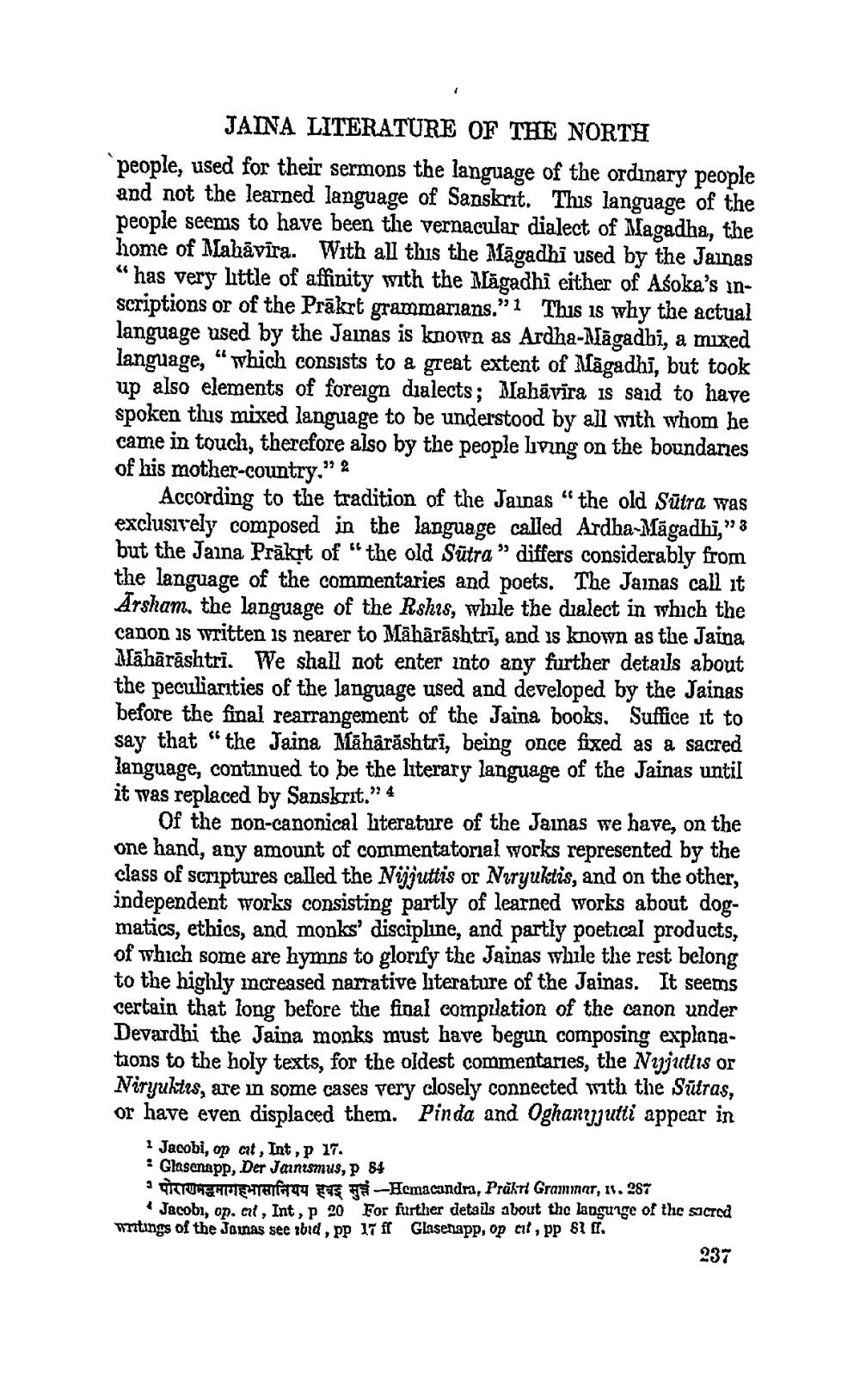________________ JAINA LITERATURE OF THE NORTH people, used for their sermons the language of the ordinary people and not the learned language of Sanskrit. This language of the people seems to have been the vernacular dialect of Magadha, the home of Mahavira. With all this the Magadhi used by the Jainas "has very little of affinity with the Magadhi either of Asoka's inscriptions or of the Prakrt grammarians." This is why the actual language used by the Jainas is known as Ardha-Magadhi, a mixed language, which consists to a great extent of Magadhi, but took up also elements of foreign dialects; Mahavira is said to have spoken thus mixed language to be understood by all with whom he came in touch, therefore also by the people living on the boundaries of his mother-country." 2 According to the tradition of the Jainas "the old Sutra was exclusively composed in the language called Ardha-Magadhi," but the Jaina Prakrt of "the old Sutra" differs considerably from the language of the commentaries and poets. The Jainas call it Arsham, the language of the Rshis, while the dialect in which the canon is written is nearer to Maharashtri, and is known as the Jaina Maharashtri. We shall not enter into any further details about the peculiarties of the language used and developed by the Jainas before the final rearrangement of the Jaina books. Suffice it to say that "the Jaina Maharashtri, being once fixed as a sacred language, continued to be the literary language of the Jainas until it was replaced by Sanskrit." 4 Of the Don-canonical literature of the Jainas we have, on the one hand, any amount of commentatorial works represented by the class of scriptures called the Nijuttis or Nuryuktis, and on the other, independent works consisting partly of learned works about dogmatics, ethics, and monks' discipline, and partly poetical products, of which some are hymns to glorify the Jainas while the rest belong to the highly increased narrative literature of the Jainas. It seems certain that long before the final compilation of the canon under Devardhi the Jaina monks must have begun composing explanations to the holy texts, for the oldest commentaries, the Nujutis or Niryuktis, are in some cases very closely connected with the Sutras, or have even displaced them. Pinda and Oghanyjutii appear in 1 Jacobi, op at , Int , p 17. * Glasenapp, Der Jainismus, P 54 : PRETUREREHT E -Hemacandra, Prakrt Graminat, 11. 287 Jacobi, op. at. Int 20 For further details about the langunge of the sicred writings of the Jainas see toid , pp 17 ff Glasetapp, op cit, pp 81 ff. 237




